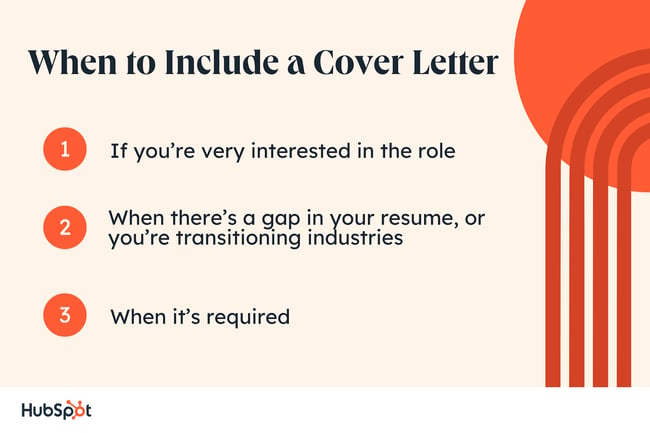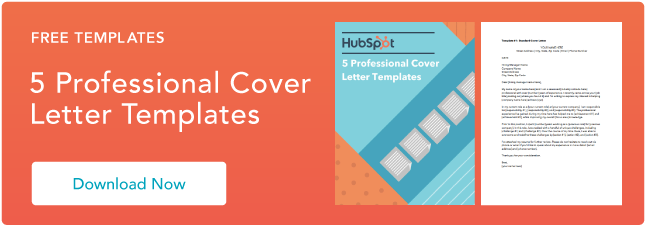Writing a cover letter can be daunting.
Writing a cover letter can be daunting.
I’ll never forget my college career coach, who made writing a cover letter look easy. Even with her tips, I’ve always found it incredibly difficult to talk about myself and hype up my accomplishments.
While it acts as a letter of introduction, I’ve wondered if a cover letter is necessary in 2024. To find out, I spoke with two recruiters and gained insights on how to write the best cover letter for any job application.
How important is a cover letter?
When to Include a Cover Letter
Tips for Writing a Cover Letter
What if the cover letter is optional?
How important is a cover letter?
Cover letters are short letters of introduction that you include with job applications.
Typically, they are your chance to go into deeper details about your accomplishments that you might not have highlighted or had room to mention on your resume.
Tiffany Hall, a professional resume writer and founder of Resume911, says cover letters are an important part of the job application process.
Hall says, “Cover letters can be very important. It’s supposed to sell why you, of all applicants, should get the job. The issue is that applicants use them to regurgitate what’s on their resume, and that’s not what it’s for. It should speak to what isn’t easily explained with your resume.”
For example, if your resume says you’re skilled at building web pages, your cover letter is a great place to name-drop companies that you’ve worked for to create their websites.
Matthew Muehleisen, a corporate recruiter, thinks a cover letter is also a great place to show you’ve done your homework and researched a company.
Muehleisen says, “It can be what sets you apart from other candidates and applicants and is a good opportunity to show that you’ve done research on the position and company to further showcase your interest in the role.”
Knowing the importance of a cover letter still begs the question: Is a cover letter necessary in 2024?
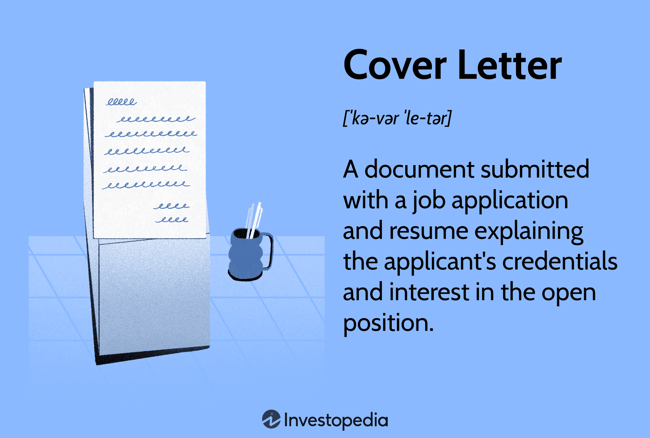
Is a cover letter necessary?
While a cover letter can help demonstrate your knowledge of the company you’re applying to and highlight more of your achievements, both Hall and Muehleisen agree that a cover letter isn’t entirely necessary.
Muehleisen says, “Unless it’s a requirement of the application, I wouldn’t say it’s necessary to include a cover letter. There are some roles (usually in content creation and marketing) that will ask for a cover letter as a form of a writing sample. In these instances, make sure your letter is polished and focused.”
If Hall had her way, she would eliminate the cover letter entirely, focus more on the resume, and ask for a link to an applicant’s LinkedIn profile.
According to Hall, “Most cover letters either repeat the resume or they speak to why the applicant isn’t a good fit. Neither is the purpose of a cover letter.”
Nevertheless, 74% of hiring managers still prefer applications to include a cover letter. So, it is definitely worth considering including one — even if the application says it’s optional.
When to Skip a Cover Letter
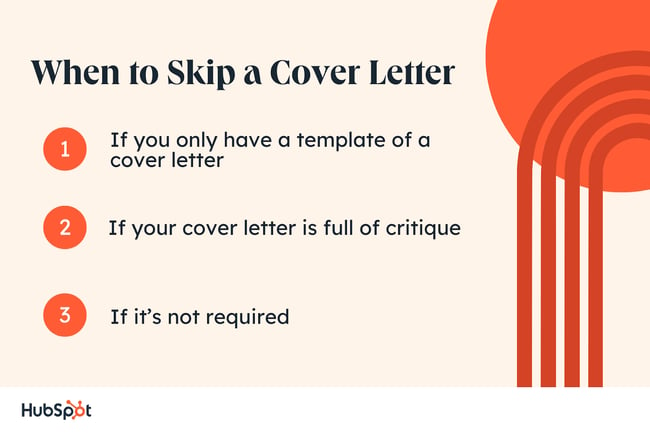
If you’re looking for a new role, writing a cover letter can be time-consuming — especially if you take the time to personalize every letter you send to a hiring manager.
Although a cover letter does serve a legitimate purpose, and 83% of hiring managers read it, there are a few situations where you shouldn’t include a cover letter. Let’s take a look at those scenarios.
If You Only Have a Template of a Cover Letter
I get it. Writing an effective cover letter takes a significant amount of time.
But consider not sending one if you only have time to plug your information into a cover letter template without personalizing it before hitting submit on an application.
Don’t get me wrong. A cover letter template is a great starting point to write your cover letter. Templates often remind you to include pertinent information like the hiring manager’s title, name, and your contact information.
However, if you don’t take the time to edit the body of the cover letter and personalize it with research and your relevant experience, you risk sending the same letter as another candidate.
And considering that 48% of hiring managers spend anywhere from 30 seconds to two full minutes reading each cover letter, the chances are high that your hiring manager can spot a form letter a mile away.
Don’t send it if you don’t have the time to personalize a cover letter.
If Your Cover Letter Is Full of Critique
A cover letter is meant to explain why you’re the best candidate for the open position. However, a cover letter is not a place for you to share your ideas of how the company can improve.
Sure, every company likely has areas of improvement, and the job you’re applying for might be the role that gets a say in that, but a list of improvements might read as a critique.
You don’t want to potentially offend a hiring manager before you even get an interview. A bad cover letter can hurt a strong candidate, according to 33% of hiring managers.
Before you submit your cover letter, read through it several times to make sure it’s not a critique. If it does sound like a critique, throw it out.
If It’s Not Required
There are other instances where you shouldn’t send a cover letter. For example, if the application’s instructions specifically state that you do not need to submit a cover letter for consideration for the job.
In fact, sending a cover letter anyway can signal to the hiring manager that you don’t follow instructions. Not following instructions is also a great way to land your application in the trash bin.
The bottom line is this: If the application specifically states not to send a cover letter, don’t send it.
When to Include a Cover Letter
Of hiring managers, 74% prefer to see job applications with a cover letter apart from the resume. Knowing this, if you have the time to include a cover letter with your job application, don’t skip it.
Here are three instances when you should send a cover letter with your application.
Send a cover letter if you’re very interested in the role.
Think of your cover letter as your time to shine. Use it as a place to highlight your experiences and the qualifications that make you a great fit for the position.
Hall says, “If you can speak to why you’re a good candidate without copying your resume in paragraph form, include a cover letter.”
In other words, don’t use bullet points in your cover letter to describe your previous employment history.
Instead, talk about what you learned on the job and how your skills will help you excel in the role you’re applying for.
Send a cover letter when there’s a gap in your resume or you’re transitioning industries.
If you’re looking to transition to another industry, you should definitely include a cover letter with your application.
Speaking from personal experience, if I had only submitted a resume to my school district when I applied to be a Spanish teacher, the hiring manager would have just seen my experience in Public Health and would not have known about my skills and success in tutoring students in Spanish.
Muehleisen puts it this way, “If you’re looking to transition to a new industry or if there is a position and company you’re really excited about pursuing as an opportunity, these are the best instances to include a cover letter so that you can possibly give yourself an advantage.”
A cover letter can also help explain any gaps in your resume — especially if the gap in your employment history is beneficial to the role you’re applying for.
For example, maybe you volunteered in South America, and the role you’re applying for is for a position in Global Operations.
It never hurts to include positive, pertinent information in your cover letter.
Send a cover letter when it’s required.
The most obvious time to include a cover letter with your application is when it is required. Just like not including a cover letter when it’s not required, it shows you can follow directions.
Include a cover letter when the application asks you to submit one, which shows you can follow directions.
Plus, if the application asks for a cover letter, you can bet the hiring manager will look for it. If no cover letter is included, well, you’re sabotaging your chances of getting an interview.
Only 13% of hiring managers will consider giving a candidate an interview if they don’t attach a required cover letter to an application.
Tips for Writing a Cover Letter
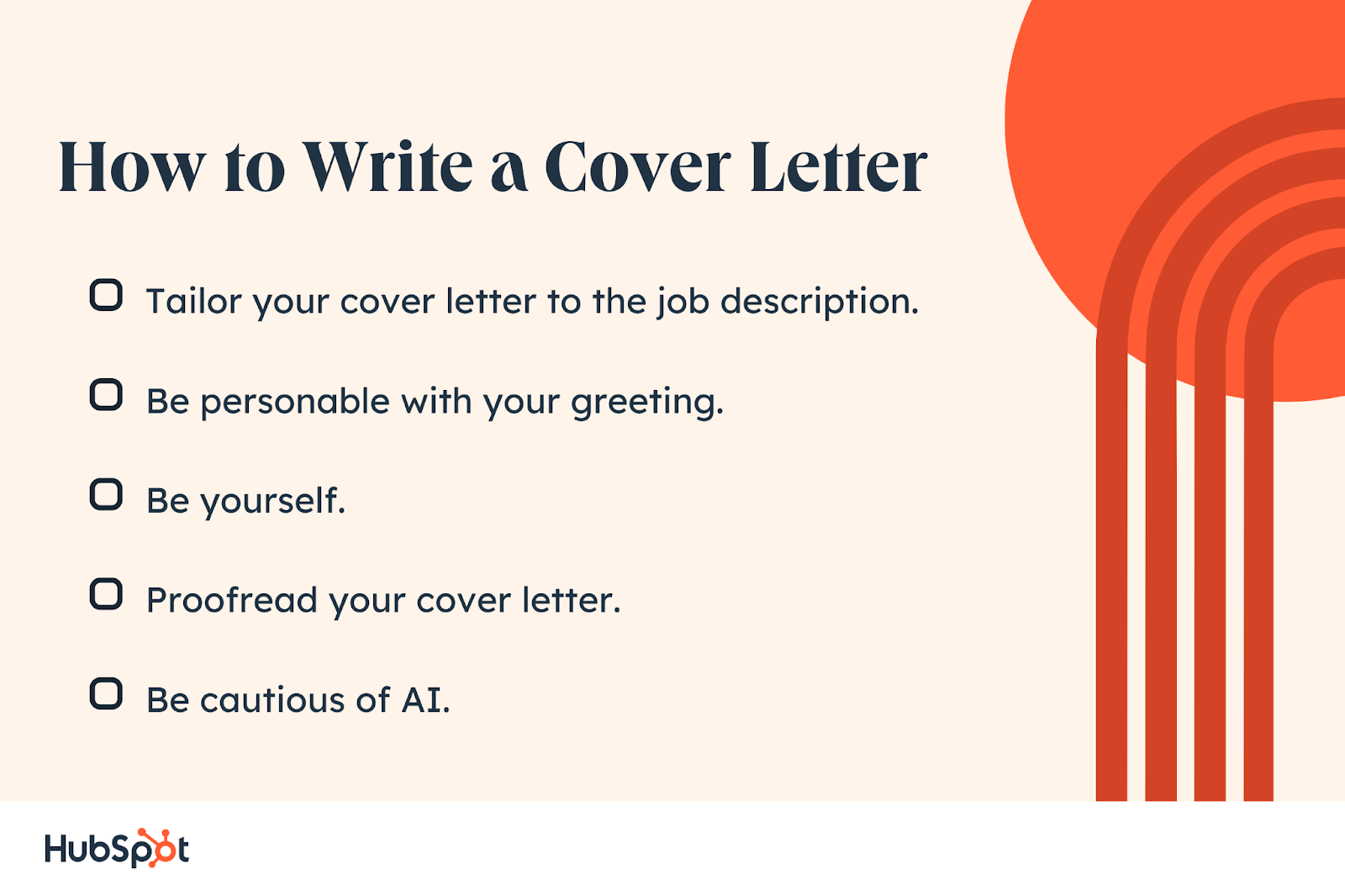
Writing a cover letter is not as painful as it sounds. There are great templates you can use as a starting point for your cover letter.
The trick with a template, though, is to make sure you always personalize the letter to your own experiences and qualifications.
Here are five expert tips to write a winning cover letter.
1. Tailor your cover letter to the job description.
When writing a cover letter, especially if you use a cover letter template, you should tailor the letter to match the job description and meet the requirements of the application.
For example, if the application asks you to attach a short cover letter, keep it brief. Your best bet is one to two short paragraphs detailing why you’re a great fit for the position.
You’ll also want to reference keywords from the job description in your cover letter. Many recruiters use applicant tracking systems that scan application packets for the best fit.
Often, hiring managers review the applications that match the keywords first.
Now, that doesn’t mean to stuff your cover letter with keywords. Instead, use them in a natural way as you discuss your qualifications.
2. Be personable with your greeting.
You might have seen the advice telling you to use “To Whom It May Concern” instead of the hiring manager’s name. This is good advice, but only if you do not know the hiring manager.
Before resorting to a generic greeting to start your cover letter, take the time to look on the company’s website and LinkedIn to find out who makes hiring decisions.
If you have contacts in your network who are familiar with the company, ask them. Taking the time to research the hiring manager and the company shows you care about the details — a quality many hiring managers look for in a candidate!
If you’re still unsure after researching the company, consider using “Dear Sir or Madam” as your greeting.
3. Be yourself.
While a cover letter is a formal introduction of yourself to a potential employer, it doesn’t need to be lacking in personality. Hall suggests sprinkling your personality in your cover letter to spark connections with the hiring manager.
Hall says, “Be your best professional self. I’m a foodie and will include references to food on my LinkedIn, and I’ve done it in a cover letter. I’ve had managers reference them, and we had a chuckle. I am also very clear about aligning myself with companies whose mission and goals I respect and can contribute to. I make sure to speak to that in the cover letter.”
Take Hall’s advice. Showcasing your vibrant personality in your cover letter can help break the ice in your interview!
4. Proofread your cover letter.
Once you’ve written your cover letter and before you hit “send,” double-check that it is free from spelling and grammar errors and that the company you referenced is the company you are applying to.
Muehleisen says skipping proofreading your cover letter is a big mistake — and it could cost you the job!
Muehleisen says, “Make sure that you are proofreading prior to sending. If the cover letter feels like it is a simple cut/paste or if the job title and company name are incorrect, it may do more harm than good. So, be sure that what you’re sending is pertinent.”
5. Be cautious of AI.
AI tools, like ChatGPT or Claude, are great for helping draft content. You might be tempted to ask generative AI to write your cover letter for you. However, both Hall and Muehleisen say to proceed with caution when it comes to AI.
Hall says, “AI is coming along in amazing ways, so it may come as a surprise that my best tip didn’t include AI. I tell my clients when they’re stuck to look to their peers. You can search people by job title on LinkedIn. See how they describe themselves and pull from there. Or, hire a resume writer or career strategist to help you.”
Muehleisen agrees with her. He says, “I would hesitate to use a tool or service for a cover letter as the point should be to show your authenticity. If you are going to use AI for assistance, make sure to put your own words in as well.”
However, when you write your cover letter, whether using a template or generative AI, personalizing it is key to standing out from the competition.
What if the cover letter is optional?
If the job description says a cover letter is optional, should you send one, or can you get by without it?
That can be tricky, considering 72% of recruiters still expect a cover, even if it’s optional.
According to Muehleisen, sending a cover letter is not a bad idea. He says, “I’ve never heard of a cover letter hurting an applicant’s chances; just make sure the one you’re including is specific to the job description and posting.”
Check out these cover letter examples for more inspiration.
Experiment With Your Cover Letters
Writing a cover letter is a breeze once you get the hang of it. With today’s challenging job market, sending a cover letter with your application can make a difference in whether you get called for an interview.
I can’t make promises that your cover letter will dazzle hiring managers each time, but for the right position for you, it will.
Remember Hall and Muehleisen’s advice when you craft your cover letter. Personalization is key to success!
![]()



![→ Click here to access 5 free cover letter templates [Free Download]](https://no-cache.hubspot.com/cta/default/53/3f347702-d7e9-4e59-9fe4-be4cd7bad191.png)
